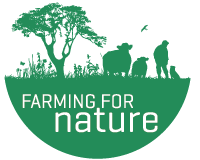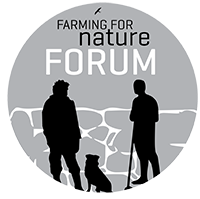Uplands
Farming in the Uplands with Biodiversity in mind
by Colm Gavin
It must be farmed
These areas must be actively farmed to maintain them in a high nature status. Abandonment can have a devastating impact on the variety of species in your land. The management and maintenance of these lands is critical for biodiversity.
Get an awareness of the species on your land
There is a lot of information out there of what is growing and living on your land. Get to know them and what suits them. This was the biggest eye opener for me, it gave me a new value on my land. What you are producing has so many different values.
Seek advice
Your farm advisor should be able to help you with any information you need. There is a lot of advice for management of the uplands available on line. There are good resources available from both The Pearl Mussel Project and the Hen Harrier Project, who are dealing with farmers with upland grazing providing excellent habitats.
Manage invasives
Invasives species can cause a massive loss to Biodiversity. Well managed grazing can be the best way to control any invasives. Rhododendron has been the main species that I have being trying to control. Once again abandonment of these areas can lead to a take over from 1 species.
Consider Cattle in relation to Bracken and Molinia control
Where sheep are the most common grazers in our uplands, we have found that introducing cattle, during the summer, out on the Commonage has managed to keep the Molinia under control. They open the plant up and make it more accessible for sheep. Bracken is not a problem on our farm, but we have seen the cattle are a good option in areas where Bracken is an issue.
Communicate, visit, and learn from other farmers
We are not trying to reinvent the wheel. There are many farmers in your locality or in similar locations who are only happy to share their knowledge and happy to welcome you onto their farm. The development of networks in the uplands is very important in keeping these places lived in and farmed.
Grazing control
Both under grazing and overgrazing can have serious consequences for biodiversity on the uplands. We run 1 ewe to the Ha and find it works for our system and what we are trying to achieve. Some hills would not be fit for this stocking rate, others would suit a higher rate. Under grazing can affect some of the smaller birds like the meadow pippet. Overgrazing can open your peatlands too much, leaving no cover, and leave no room for life. It’s a fine balance and needs to be monitored over a long period and results noted.
Farmers here are the rare species
Farmers in the uplands are the species that needs to be looked after. There is a wealth of knowledge, experience and understanding in upland farmers, this should not be overlooked, it can be lost very easily. Decreasing rural populations in these areas is a very serious problem. These are generally areas of high nature value, but the management of these areas and life in these areas does not feel too valued. Developing of networks, friendships, communities, and learning are very important in the uplands.
About Colm Gavin
More information on Colm’s farm here. Ambassador since 2021
Farming at Altitude with Nature
By Nia O’Malley
What does it take to farm the uplands in a way that both provides an income and restores nature? Nia O’Malley farms 150 acres in the Slieve Aughty Mountains in Co. Galway, in the west of Ireland. She explains how her beef farming works to support – not diminish – the wild species who make the uplands their home. This is a 20-minute podcast from the Groundtips series. To listen just click below, then like, share, review.
Using donkeys and ponies to manage rush and molinia
By Nia O’Malley
Farming in the uplands requires a good deal of management of rush and molinia grass. Effective management requires close grazing of these two plants in order to keep growth under control. Topping and mowing can work very well in controlling strong rush, but I find it is the close grazing of the young rush after this that is most effective when it comes to managing rush growth. Similarly with molinia grass, close grazing over the summer months can really help control this grass. However, come late August/early September, molinia grass starts to lose a lot of its nutritional value.
Here is the Slieve Aughties, it is not ideal to close graze rush or late season molinia grass with cows as they will be affected nutritionally, and production negatively impacted – beef/milk production, growth. This isn’t the case with donkeys. They have far lower nutritional requirements than cows, plus they have evolved to be able to extract what they need nutritionally from poorer quality shrubs and grasses, so actually do quite well grazing off young rush and late season molinia.
I find donkeys compliment farming in the uplands with cows really well, as can be used to follow through after cows have grazed an area to help ‘clean up’ the field. I tend to put the cows through first to graze off the best of the grass, and follow through with the ponies, and then lastly with the donkeys and they graze off any young rush, unwanted scrub or molina grass that has been left behind. I find this works really well and have managed to bring some very poorly marked fields (due to rush and Molinia) well up on marks, with some fields even getting upgraded to species rich. This was hugely rewarding! For me donkeys have played a huge role in turning my farm around, enhancing grassland value while also increasing biodiversity value.
Donkeys are classed at 0.8 LU, same as a cow, but are often overlooked as a farm animal. They may not be a commercial animal in terms of production eg beef or milk to sell, but for me they play an equally important role – in production of a different kind – biodiversity. They have improved my grassland, which in turn has improved my beef production. But in doing so have also improved my ‘biodiversity’ production with improved fields teeming with wildlife.
Tip on rush growth: rush appears to grow much slower during the winter months and I find topping rush as late as possible in the autumn, followed by grazing off young growth with donkeys during the early winter months, really helps control rush. The rush seems to grow quite slowly during the winter and this gives the grasses a good chance to establish and get a head start over the rush come Spring. Just something I’ve observed on my farm on my never ending quest to get on top of rushes!
About Nia O’Malley
More information and a film on Nia’s farm here. Ambassador since 2021

